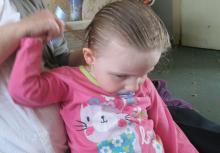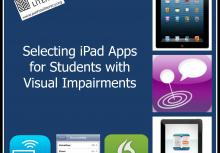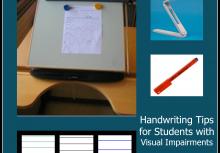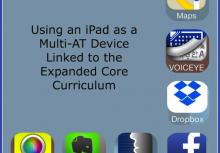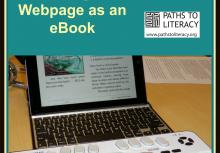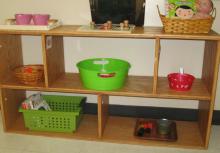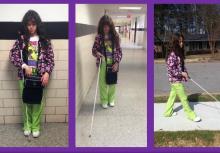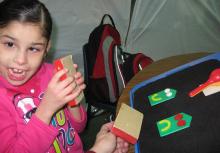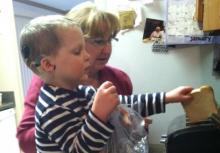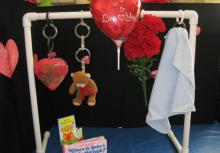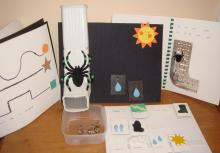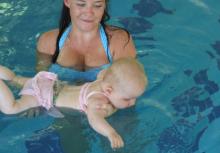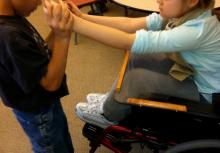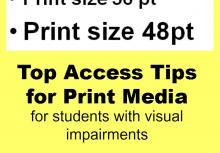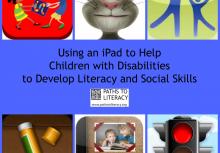By Faye Gonzalez, TVI & COMS
I had a dilemma over the past year in working with my students who have Visual & Multiple Disabilities (V&MD). One student in particular challenged my teaching methods. My dilemma was:
Sensory activities...
Blog Posts
Below are recently created blog posts.
By Faye Gonzalez
By Cindy Reed-Brown
Like most TVIs, the preschool Education Consultants at CT Services for the Blind have been using “storyboxes” for many years with our students. Also, like most TVIs, we’ve tried to provide a variety of social activities for our young...
By ScarlettsEyes
Without reliable access to clear visual information, children who are visually impaired must rely on additional modes of learning, such as through touch and auditory information. So what do you do with a child who will only sing and is reluctant to explore...
By Linda Mamer
Making decisions about which applications (apps) for iPads are the most suitable for specific students involves a number of different steps. This article looks at:
Considerations for iPad App Selection
How to Choose an...
By Gwyn McCormack
Top Access Tips: Writing
Students with visual impairments often benefit from the use of specialized tools and materials. Special paper, writing tools, lighting and other equipment can make it easier for them to write. It is important to...
By Tara Mason
I have been studying iPads and teacher professional development for the past two years for my Ph.D. research study. For my study, I have created learning resources around using iPads as a multi-device linked to the Expanded Core Curriculum that I would like...
By Sharon@TSBVI
There is a wonderful resource, which allows your student to save a webpage as an individual EPUB file.
What is an EPUB?
“.epub” is an electronic book format that has become the industry standard. EPUB files can be read in most...
By Katie Armstrong
Recently I submitted a post called Montessori Activities to Promote Pre-Literacy Skills for Tactual Learners. This post was about fun Montessori activities, how to get started creating a few activities, and how they reinforce beginning braille readiness...
By Laurie Hudson
Literacy happens throughout Orientation & Mobility curricula: maintaining personal notes of walking routes and personal O&M journals, reading public transportation routes and schedules, menus and maps, processing Global Positioning System output,...
By Faye Gonzalez
In an earlier blog post, I discussed guidelines for Using a Picture Symbol System for Communication and Literacy. In addition to the factors discussed in that post, another crucial consideration in designing a communication system for students...
By Liamsmom
My son Liam (a happy, social, deaf-blind preschooler) has an intervener/interpreter that is with him at school. Liam’s intervener and I wanted to create a conversation box that he could use at school. We came up with an experience Liam...
By Jaime Brown
Toy bars are a wonderful tool when teaching pre-literacy skills. Object awareness and knowledge can be introduced and reinforced through toy bars. Students learn about the characteristics of items through all of their learning channels. They have...
By Diane Brauner
Theme: Itsy Bitsy Spider is a Circle Time Braille Kit that focuses on the letter "s", spiders, weather and counting to 8.
This kit is designed to be used together with the Letter "S" Interactive Braille Book, which is found...
By ScarlettsEyes
Firstly I'd like to introduce myself: my name is Charlotte and I am a single mother of two. I have Scarlett, who is blind and three and a half, and Sonny, who is two and a half and fully sighted. I run an online parents' support...
By Gwyn McCormack
Pictures
1. Size of graphic
Present clear, well contrasting, simple large graphics.
Remove detail and visual clutter from graphic.
Add black outlines to shapes and main key features.
Remove complex colouring.
Use...
By Liamsmom
My 4 ½-year-old, deaf-blind son Liam identifies both people he knows and people he meets by their identifiers. For most people an identifier may be a ring, watch, bracelet, etc. that they always wear. The more he knows a person, the more he...
By Penny Rosenblum
Dots for Families was originally designed in 2003 by L. Penny Rosenblum, Ph.D., University of Arizona, and Linda Reed, M.Ed., Arizona State Schools for the Deaf and the Blind Parent Outreach Program for the Visually Impaired for family members, teachers of...
By Megan Mogan
I had the absolute pleasure of being part of a Perkins eLearning workshop for the last 5 weeks, focusing on AAC strategies to use with students who are Visually Impaired and have additional disabilities. I referred to this population of students as...
By Gwyn McCormack
The following tips sheet is aimed at offering short, clear guidance to class teachers regarding print media access for children and young people with visual impairment. Each child's access is individiual and a careful and thorough assessment of their...
By Linda Mamer
iPads are used in more and more ways in the educational programs of students who are blind or visually impaired. They can be used to help children to develop basic concepts, to reinforce literacy skills, to support communication, to promote the...



